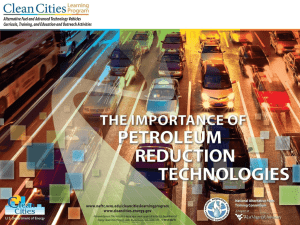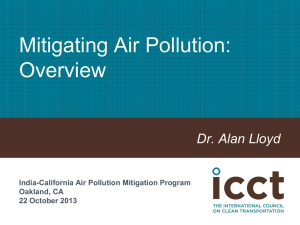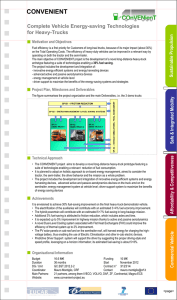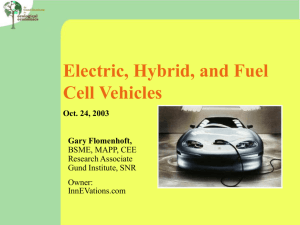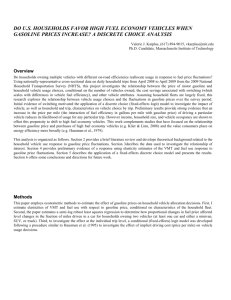Hazardous Materials: Awareness and Operations
advertisement
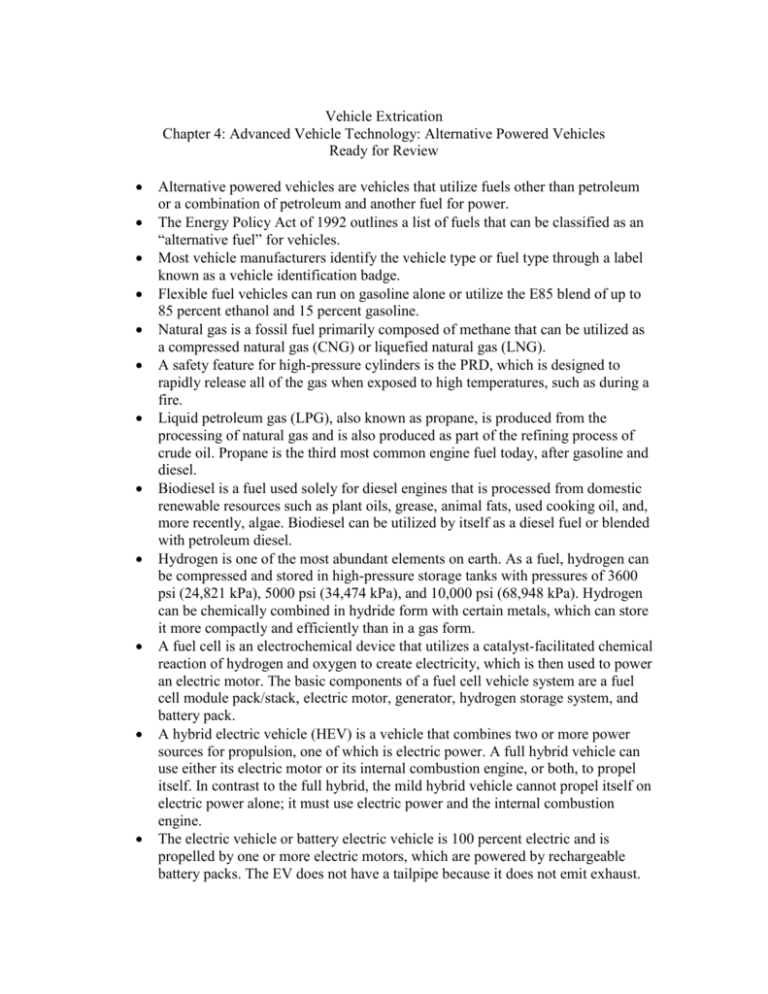
Vehicle Extrication Chapter 4: Advanced Vehicle Technology: Alternative Powered Vehicles Ready for Review Alternative powered vehicles are vehicles that utilize fuels other than petroleum or a combination of petroleum and another fuel for power. The Energy Policy Act of 1992 outlines a list of fuels that can be classified as an “alternative fuel” for vehicles. Most vehicle manufacturers identify the vehicle type or fuel type through a label known as a vehicle identification badge. Flexible fuel vehicles can run on gasoline alone or utilize the E85 blend of up to 85 percent ethanol and 15 percent gasoline. Natural gas is a fossil fuel primarily composed of methane that can be utilized as a compressed natural gas (CNG) or liquefied natural gas (LNG). A safety feature for high-pressure cylinders is the PRD, which is designed to rapidly release all of the gas when exposed to high temperatures, such as during a fire. Liquid petroleum gas (LPG), also known as propane, is produced from the processing of natural gas and is also produced as part of the refining process of crude oil. Propane is the third most common engine fuel today, after gasoline and diesel. Biodiesel is a fuel used solely for diesel engines that is processed from domestic renewable resources such as plant oils, grease, animal fats, used cooking oil, and, more recently, algae. Biodiesel can be utilized by itself as a diesel fuel or blended with petroleum diesel. Hydrogen is one of the most abundant elements on earth. As a fuel, hydrogen can be compressed and stored in high-pressure storage tanks with pressures of 3600 psi (24,821 kPa), 5000 psi (34,474 kPa), and 10,000 psi (68,948 kPa). Hydrogen can be chemically combined in hydride form with certain metals, which can store it more compactly and efficiently than in a gas form. A fuel cell is an electrochemical device that utilizes a catalyst-facilitated chemical reaction of hydrogen and oxygen to create electricity, which is then used to power an electric motor. The basic components of a fuel cell vehicle system are a fuel cell module pack/stack, electric motor, generator, hydrogen storage system, and battery pack. A hybrid electric vehicle (HEV) is a vehicle that combines two or more power sources for propulsion, one of which is electric power. A full hybrid vehicle can use either its electric motor or its internal combustion engine, or both, to propel itself. In contrast to the full hybrid, the mild hybrid vehicle cannot propel itself on electric power alone; it must use electric power and the internal combustion engine. The electric vehicle or battery electric vehicle is 100 percent electric and is propelled by one or more electric motors, which are powered by rechargeable battery packs. The EV does not have a tailpipe because it does not emit exhaust.



